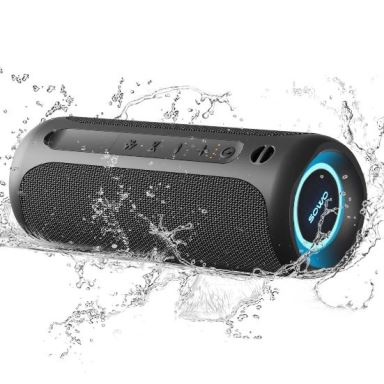Did you know that your Bluetooth speaker could be harboring some unwelcome guests? The Geonode team explores how Bluetooth speakers could potentially become a breeding ground for dangerous superbugs.
Your Bluetooth Speaker Could be a Breeding Ground for Superbugs
There’s a hidden microbiological society thriving in a place you’d least expect – your Bluetooth speaker.
RELATED: The security risks of dash cams
As we look around our personal spaces, we usually see visible dirt, dusty surfaces, and less-clean items. But what about the lesser obvious things such as your wireless Bluetooth speaker? Surprisingly, this everyday gadget might be a fertile breeding ground for a host of microorganisms, including potentially harmful superbugs.
Hiding in Plain Sight
Inside our homes, we have specific cleaning routines for floors, bathrooms, kitchen surfaces, and other noticeable spaces. Yet, everyday gadgets like your Bluetooth speaker seldom receive the same scrutiny. This is despite them being handled frequently, exposed to various environmental conditions, and rarely thoroughly cleaned.
With their unsuspecting crevices and the convenience of being portable, Bluetooth speakers can harbor a myriad of bacteria and fungi. While some of these microbes are relatively harmless, there might be potential superbugs lurking within.
A study published in BMC Infectious Diseases Journal has shown a variety of dangerous superbugs, such as E. Coli, Staphylococcus, and MRSA, can survive on surfaces for days. Your speaker, with its inviting textured material, flat surfaces, and crevices, may serve as a versatile habitat for these fast-breeding germs.
Understanding Superbugs
Don’t be misled by the term ‘superbug’. It’s not a particular strain of a giant insect lurking in the cracks of your speaker. It’s a strain of bacteria resilient to the antibiotics usually used to treat them. Superbugs can potentially lead to severe illnesses that are tougher to treat.
According to the Centers for Disease Control and Prevention, superbugs infect over 2.8 million people and kill at least 35,000 in the United States annually.
Why Bluetooth Speakers?
Josh Gordon, a technology expert at Geonode, explains how your Bluetooth speaker might facilitate microbial growth:
“The design of many Bluetooth speakers includes nooks, crannies, buttons, and fabric covers which are not readily cleanable. Additionally, the prolonged exposure to multiple environments and surfaces, intermittent use patterns, and variations in storage conditions can encourage bacterial and fungal growth.”
Risk Rating
Before you start panicking, it’s essential to remember that the risk posed by such superbugs is relatively low for healthy individuals. “These organisms are everywhere. However, it becomes a cause for concern among individuals with weak immune systems or those prone to recurrent infections,” adds Gordon.
Keeping it Clean
Ensuring the cleanliness of your Bluetooth speaker isn’t as challenging as it sounds. Here are some proactive measures, as outlined by Gordon:
- Regular Cleaning: Wipe down the exterior of the speaker with a slightly damp cleaning cloth. Avoid getting water inside the device as it may damage electrical components.
- Usage of Sanitizers: Use rubbing alcohol or sanitizing wipes to further ensure cleanliness.
- Safe Storage: When not in use, store your speaker in a clean, dry area.
Gordon’s parting advice is concise, “Treat your Bluetooth speaker with the same hygiene consciousness as any other frequently touched item in your home.”
So, before you turn up the volume on your favorite track again, spare a thought for what might be living in ‘Stereo’. As we quest for neat, decluttered spaces, let’s not overlook these technological companions that can unwittingly play host to some unwanted guests. Today, it’s not only the sound quality that matters but also the microbial quality. Your path to a great music experience is only a clean swipe away!
Credit https://geonode.com/






























